Articles on canadian banknotes
This section lists several articles on canadian banknotes. You can submit your own articles by contacting us.
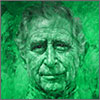
A New $20 Vertical Banknote
After the death of Elizabeth II and the coronation events, the federal government announced that image of King Charles will eventually replace the queen on Canada's 20 dollars notes. The back will continue to feature the Canadian National Vimy Memorial.
By thecanadiannumismatist | Saturday, May 18, 2024
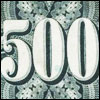
Top 10 most valuable Canadian banknotes sold at auction in 2023
Here's the Top 10 most valuable Canadian banknotes sold at auction in 2023 so far. Prices are in Canadian currency.
By thecanadiannumismatist | Tuesday, November 28, 2023
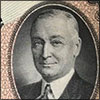
Bank of Nova Scotia's Chartered Banks Acquisitions Timeline
On December 31, 1831, a large group of Halifax businessmen met in the Merchants Exchange Coffee House to discuss the need to create a public bank as an alternative to the privately owned Halifax Banking Company. Three months later, on March 30, 1832, royal assent was given. The Bank of Nova Scotia became the first chartered bank in Nova Scotia and held their first shareholders' meeting at the Merchants Exchange Coffee House on May 10, 1832.
By thecanadiannumismatist | Sunday, November 19, 2023
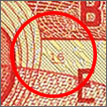
1954 to 1973 banknotes plate numbers locations
The number on the face of a banknote is called face plate number and the number on the back is simply the back plate number. It is rare that the face and back plate numbers are the same. Each plate to produce Canadian banknotes have numbers assigned to it and were applied during printing.
By thecanadiannumismatist | Monday, August 28, 2023
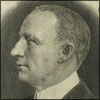
Bank of Montreal's Chartered Banks Acquisitions Timeline
The bank officially began conducting business on November 3, 1817, making it Canada's oldest bank. The Bank of Montreal was founded in Montreal, Quebec, when John Richardson and eight merchants signed the Articles of Association to establish the Montreal Bank in a rented house in Montreal, Quebec. It was previously called Montreal Bank.
By thecanadiannumismatist | Wednesday, August 9, 2023
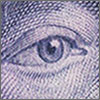
Security features on 2001 to 2011 banknotes
On January 17, 2001, Bank of Canada launched the first note from the Canadian Journey series. The designs were choosen to reflect Canadians' views of their culture, history, and achievements.
By thecanadiannumismatist | Wednesday, July 5, 2023
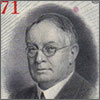
Canadian Imperial Bank of Commerce's Chartered Banks Acquisitions Timeline
The Canadian Imperial Bank of Commerce was formed through the 1961 merger of the Canadian Bank of Commerce and the Imperial Bank of Canada, in the largest merger between chartered banks in Canadian history.
By thecanadiannumismatist | Thursday, May 18, 2023
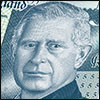
King Charles III on Canadian notes
King Charles III was officially crowned in a coronation ceremony on May 7. This is the first coronation to take place in 70 years, since that of the late Queen Elizabeth II in 1953. During the coronation events, the federal government announced that image of King Charles will eventually replace the queen on Canada's 20 dollars notes.
By thecanadiannumismatist | Monday, May 8, 2023
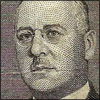
Royal Bank of Canada's Chartered Banks Acquisitions Timeline
Also known as RBC, the Royal Bank of Canada is now a Canadian multinational financial services company and one of the largest bank in Canada. RBC also has 127 branches across seventeen countries in the Caribbean and operates several branches across the United States. Over the years, it merged with multiple chartered banks that issued banknotes.
By thecanadiannumismatist | Wednesday, April 26, 2023
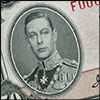
Top 10 most valuable Canadian banknotes sold at auction in 2022
Here's the Top 10 most valuable Canadian banknotes sold at auction in 2022 so far. Prices are in Canadian currency.
By thecanadiannumismatist | Thursday, December 1, 2022
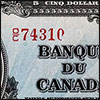
List of some intriguing and valuable error Canadian notes
Like regular banknotes, error notes value depends on several factors such as rarity, quality and wear, mintage and supply and demand. But the shape, size, rarity and other aspect of the error affect it. Furthermore, error banknotes are often unique, making it very subjective to assign a precise value on a general type of error.
By thecanadiannumismatist | Thursday, July 7, 2022
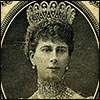
Top 10 Canadian most valuable banknotes sold at auctions in 2021
Featuring two of the rarest and most sought-after banknotes in Canadian history, the year 2021 was an impressive one for paper money. Here's the top 10 Canadian most valuable banknotes sold at auctions in 2021 so far.
By thecanadiannumismatist | Tuesday, December 7, 2021
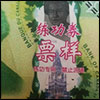
Counterfeit banknotes in circulation
According to the following statistics, the launch of polymer banknotes in 2011 stopped several people from issuing counterfeit banknotes. In 2014, 552,968 fraudulent notes were issued compared to less than 35,000 (~6.5%) in 2019. Because less banknotes were circulating in 2020 due to the COVID situation, the numbers are even lower.
By thecanadiannumismatist | Wednesday, August 18, 2021
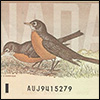
Is my Canadian banknote worth $25,000?
Following the lost of legal tender status for $1, $2, $25, $500, and $1,000 banknotes at the beginning of 2021, multiple post and articles appeared on social medias and websites about banknotes worth up to $25,000. Fact is, if you have a modern banknote in hand, there is a one-in-a-billion chance it is worth several thousand dollars.
By Coinsandcanada | Saturday, April 24, 2021
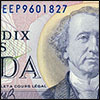
Top 10 Canadian most valuable banknotes sold at auctions in 2020
Even if, effective January 1, 2021, the Government will remove legal tender designation from certain bank notes that are no longer being produced, the banknotes market did very well. After the Top 10 2020 coins and the Top 10 2020 tokens, here's the top 10 most valuable certified banknotes sold at auctions in 2020.
By Lightw4re | Friday, December 11, 2020
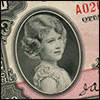
Top 10 canadian most valuable banknotes sold at auctions in 2019
Following the Top 10 most valuable canadian coins sold at auction in 2019 here's the top 10 most valuable certified banknotes sold at auctions in 2019.
By Lightw4re | Monday, May 11, 2020
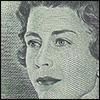
How much my canadian banknote is worth?
There are several factors that influence the value of any canadian banknote such as rarity, supply and demand, condition, special serial numbers, errors and varieties... This simple guide will help to determine the value of any Bank of Canada banknote.
By Lightw4re | Tuesday, January 7, 2020
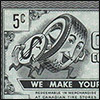
Canadian Tire coupons and banknotes
Canadian Tire banknotes were introduced in 1958 and are used as a loyalty program inspired by Muriel Billes, the wife of Alfred J. Billes, first president and Canadian Tire's co-founder, as a response to the promotional giveaways that many gas companies offered at the time.
By Lightw4re | Friday, July 21, 2017
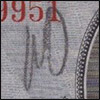
Examples of post-production defects on Canadian banknotes
Canadian banknotes pictures showing examples of post-production defects.
By Lightw4re | Thursday, June 15, 2017
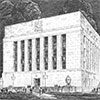
Bank of Canada's history
Until the Great Depression of the 1930s, there appeared to be little need for a central bank in Canada, which was sparsely settled and mainly rural at the time. British influence was reflected in the preference for a limited number of banks with multiple branches. In a relatively undeveloped economy, branch banks could be established with less capital and fewer skilled officers than would have been required for independent banks at each location.
By Bank of Canada | Tuesday, March 18, 2014

Design and production of Canadian bank notes
It takes several years to design a series of bank notes. Once the designs have been approved, the Bank contracts the printing of the notes to two security printing companies, Canadian Bank Note Company, Limited and BA International Inc. The bank notes are printed 45 to a sheet, cut, and delivered to the Bank.
By Bank of Canada | Friday, February 11, 2011

Accessibility features
Several features in the Canadian Journey and Birds of Canada bank note series are designed to help blind and visually impaired Canadians recognize bank note denominations either by touch, by sight, or by electronic signal. These design elements are not security features and should not be used to authenticate bank notes.
By Bank of Canada | Friday, February 11, 2011
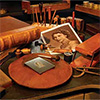
The Art and Design of Canadian Bank Notes
Since its founding in 1935, the Bank has fulfilled this mandate through its activities in four areas: monetary policy, the financial system, funds management, and the issuing of bank notes.
By Bank of Canada | Wednesday, December 6, 2006

Creating a Modern Bank Note
As Canada's sole note-issuing authority, the Bank of Canada is responsible for overseeing all stages in the development of a new series of bank notes: research, design, and production. The form and material of the notes are subject to approval by the Minister of Finance. The Bank carries out its research in collaboration with external partners.
By Bank of Canada | Wednesday, December 6, 2006
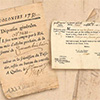
Early bank notes in Canada
The earliest official paper currency in Canada was not a bank note–it was a playing card. In 1685, a shortage of coins in the colony of New France prompted officials to look for new ways to pay their troops and continue trade and commerce. Their solution was card money–playing cards cut to different sizes according to denomination and signed by colonial officials.
By Bank of Canada | Wednesday, December 6, 2006
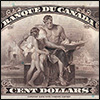
The First Bank of Canada Notes: 1935
The Bank of Canada did not, in fact, design the first bank notes that it issued. For months before Canada's central bank opened its doors, the federal government had been working on the design, approval, and production of a new series of notes to coincide with the opening of the Bank.
By Bank of Canada | Wednesday, December 6, 2006
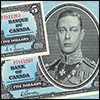
The First Bilingual Series: 1937
The creation of a second series of bank notes, only two years after the first, was prompted by changes in federal legislation that required the Bank of Canada to produce bilingual bank notes. This amendment to the Bank of Canada Act prompted bitter debate in Canada's House of Commons, but the production of bilingual notes was widely endorsed by parliamentarians and by the public.
By Bank of Canada | Wednesday, December 6, 2006
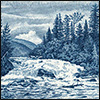
The Canadian Landscape Series: 1954
With the ascension of Queen Elizabeth II to the throne in 1952, the Bank began planning the third series of Bank of Canada notes. Although the colours and bilingual text were retained, significant changes to the design gave the new series a distinctly modern look.
By Bank of Canada | Wednesday, December 6, 2006
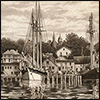
The Scenes of Canada Series: 1969-1979
Development of a new series of notes began in earnest during 1963 and 1964 with the goal of producing notes that would be more secure in the face of the advancements in reproduction techniques available to counterfeiters. Both British American Bank Note and Canadian Bank Note were involved in the early concepts.
By Bank of Canada | Wednesday, December 6, 2006
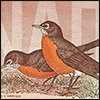
The Birds of Canada Series: 1986
By 1983, the Bank had decided to use clear, uncluttered images of Canadian birds on the backs of the new notes. The use of a single, large focal point in the design was considered more secure than other, more complex, submissions, because printing defects in a counterfeit note would be easier to detect.
By Bank of Canada | Wednesday, December 6, 2006
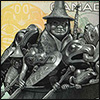
The Canadian Journey Series
Research for a new note series was under way by 1997. As high-resolution colour copiers, inkjet printers, and computer scanners became more affordable, the potential for counterfeiting intensified. With the goal of having a new design ready by 2000, a process that usually takes six years was collapsed into three. What emerged was the most distinctly Canadian series of notes ever produced by the Bank.
By Bank of Canada | Wednesday, December 6, 2006
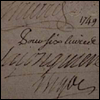
A New Kind of Money-Playing Cards
In the late 17th century, the shortage of coinage grew so severe that New France's colonial authorities resorted to issuing a completely new kind of money: playing cards. In 1685, the government had no money to pay the wages of soldiers stationed at Québec.
By Library and Archives Canada | Monday, March 29, 2004

A New Issue of Card Money
In response to the currency shortage, the King of France authorized a new issue of card money in 1729. Card money was issued until the fall of New France in 1760. Unlike that issued from 1685 to 1714, this card money was printed on ordinary white cardboard, and the size varied by denomination.
By Library and Archives Canada | Monday, March 29, 2004
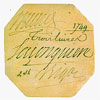
New France, card money, 3 livres, 1749
In 1685, the French colonial authorities issued the first paper currency in North America. Faced with a shortage of coins with which to pay his troops, De Meulles, the Intendant of New France, introduced as a temporary expedient an issue of paper currency.
By Library and Archives Canada | Monday, March 29, 2004

New France: 48 Livres, 1753
The French authorities in New France have the distinction of being the first government in North America to issue paper money. Known as card money and first issued in 1685, the notes were an emergency measure that enabled the Intendant to pay his troops before the annual pay ship arrived from France.
By Library and Archives Canada | Monday, March 29, 2004
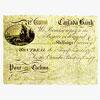
Canada Banking Co., 5 shillings, 1792
In the early days of settlement in Canada, any banking services were largely performed by merchants. Following the founding of the Bank of the United States in 1791, interest on the part of merchants in the provision of banking services in Canada increased.
By Library and Archives Canada | Monday, March 29, 2004
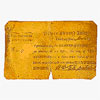
Prince Edward Island, William Fitzpatrick, two shillings, six pence, leather, 1836
Prince Edward Island, like the other pre-Confederation British North American colonies, often lacked the small change necessary for transacting business. The need for larger denominations was filled by government treasury notes and notes of the New Brunswick and Nova Scotia banks. One of the ways in which the merchants of the island combatted the lack of change was to issue their own notes.
By Library and Archives Canada | Monday, March 29, 2004

The Rise of Banks
At the end of the War of 1812, in 1815, the British government redeemed army bills at full value, helping to restore the public's confidence in paper money and setting the scene for the rise of banks in Canada. The new banks issued their own notes, which were guaranteed by their reserves of gold and silver.
By Library and Archives Canada | Monday, March 29, 2004
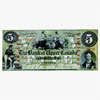
The Bank of Upper Canada, $5, 1861
The note illustrated, dated "1 Jan'y 1861," belongs to the last issue of The Bank of Upper Canada. It reflects the technical advances in security printing of the time, and its design is rich in symbolism.
By Library and Archives Canada | Monday, March 29, 2004
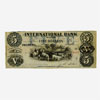
The International Bank, five dollars 1858
Between 1855 and 1859, the Legislature of the Province of Canada recklessly granted bank charters to 24 different applicants. The International Bank of Canada was one of the more dubious of these enterprises - the classic example of a "wildcat bank." It had a valid charter but operated dishonestly by issuing large quantities of notes it had no intention of redeeming.
By Library and Archives Canada | Monday, March 29, 2004
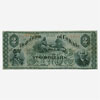
Canada's First Notes
Between 1868 and 1869 the Dominion government withdrew from circulation and exported several million U.S. silver coins, which were actually worth only 80 per cent of their face value. This ensured that Canadian coins were the only coinage in use in Canada. Waiting for the 1870 series of coins to arrive from England, the central government resorted to issuing 25-cent notes.
By Library and Archives Canada | Monday, March 29, 2004
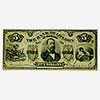
Bank of London, five dollars, 1883
The five-dollar note illustrated was issued by the Bank of London in Canada, which operated from 1883 to 1887. The bank's demise in 1887 marked the end of the long and frenzied financial career of its president, Henry Taylor. Up until 1887, the bank had conducted an uneventful but prosperous business, establishing branches throughout southwestern Ontario.
By Library and Archives Canada | Monday, March 29, 2004
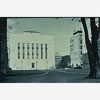
The Bank of Canada
It was also during the 1930s - in 1935, to be precise - that Canada opened its own central bank, the Bank of Canada. This institution, whose original head office constructed in 1937 you see here, was given a mandate to regulate the country's money supply and to ensure the efficient operation of the Canadian economy.
By Library and Archives Canada | Monday, March 29, 2004
More articles
- Canadian coins
- Canadian tokens and medals
- International
You can submit your own articles by contacting us.



